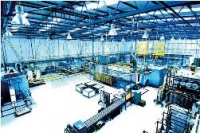Welcome to MAGI
MAGI offers world-class ERP software setting a higher standard of excellence!
MAGI develops and supports high quality ERP business solutions for small to mid-sized manufacturers. MAGI has been developing software solutions since 1985 and has installations worldwide.
Our premier product, WinMAGI, is a world class manufacturing ERP system for small to mid-sized manufacturers. It blends solid accounting and manufacturing practices in an easy to use and
implement package. Subjected to continuous critiquing and improvement, it is used in industries as diverse as consumer products, aerospace & defense, hazardous chemicals, food and beverage, furniture, computer imaging, plastic molding, electronics, automotive components, fishing tackle and others. WinMAGI is used by small startup companies and divisions of Fortune 100 multi-national organizations.
Our Mission:
To provide world-class ERP software and services as an alternative to software that is expensive, difficult to install, and confusing. We will provide the software features customers want at a price that is a clear advantage over other products. Our software is developed by people with manufacturing backgrounds that are dedicated to help our customers maximize their returns from ERP software.





